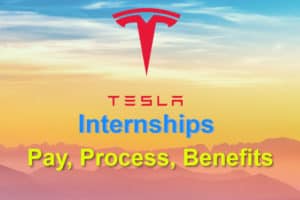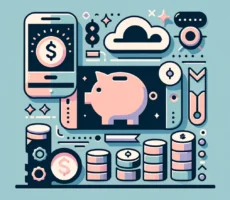You’re about to step into a world where cutting-edge automotive technology meets Silicon Valley’s software elite – welcome to the realm of software development at Tesla. Like a Tesla navigating through rush hour, you require the precise skills to maneuver through the complex labyrinth of code that powers electric dreams.
In this read, you’ll discover the essential software development skills you need to catch the eye of a tech titan like Tesla.
Quick Takeaways:
- Proficiency in C++ and Python is essential for developing Tesla’s high-performance embedded systems and handling data analysis tasks.
- A strong foundation in AI and machine learning is critical for contributing to Tesla’s advanced features like the Autopilot system.
- Embrace Agile and Scrum methodologies to thrive in Tesla’s dynamic environment, ensuring adaptability and continuous improvement in software development.
What Does It Take to Code for a Car That’s Smarter Than Your Average Sedan?
When you’re dealing with a car that’s got more brains than your typical ride, you’re stepping into an entirely different league of software development. Coding for a Tesla isn’t just about slinging lines of code that look good on a monitor; it’s about understanding the soul of the machine. Let’s dive into what that really means.
For starters, you’ve got to be tight with embedded systems. We’re talking about writing software that’s going to live right in the heart of the car’s hardware, controlling everything from the battery management to the entertainment system. Getting this symbiotic relationship right requires a deep understanding of how software affects hardware and vice versa.
Then there’s real-time computing. A Tesla won’t wait for your code to catch up before it needs to make a split-second decision, like avoiding a sudden obstacle. Your algorithms must be optimized for instantaneous response times, ensuring the car responds correctly to live data inputs with near-zero latency.
And let’s not forget the balance between safety and innovation. Teslas are packed with advanced features that need to constantly push the envelope while also keeping passengers secure.
All this means that when you’re coding for a Tesla, you’re not just a developer; you’re a bit of a wizard conjuring spells that bridge the digital with the physical, in the form of thousands of precision-engineered parts humming along harmoniously.
How Important Is Mastery of Specific Programming Languages?
In the world of software development for advanced vehicles like those churned out by Tesla, language isn’t just about communication; it’s the bedrock of creation. The most crucial languages you’ll be brushing up on are:
C++: It’s like the Swiss Army knife in your toolkit. Hugely popular for its application in embedded systems due to its speed and efficiency, C++ is a must-know for programming high-performance car software.
Python: This one’s the chameleon of programming languages; adaptable, easy to read, and perfect for scripting and automation, which comes in handy for testing and data analysis.
So, yes, knowing your languages inside out is essential. But it’s not just about knowing how to code in these languages; it’s about mastering them to the point where you can craft robust, efficient, and safe systems that future Tesla drivers will depend on.
Can You Hack It on Tesla’s Team Without Experience in AI and Machine Learning?
Artificial intelligence (AI) and machine learning (ML) aren’t just buzzwords when it comes to Tesla – they’re the lifeblood of the vehicle’s most cutting-edge features, like the renowned Autopilot system. And here’s the scoop: if you want to be part of the team that’s pushing the envelope of what cars can do, an expertise in AI and ML isn’t just valuable; it’s downright critical.
AI powers the smart decision-making aspects of Tesla’s vehicles. It’s about enabling cars to learn from their environment, to improve with every mile driven. Without these smarts, an autonomous future would just be a pipe dream.
Now, here’s a unique pointer that most overlook: In addition to understanding neural networks and decision trees, it’s equally vital to have a grasp on ethical AI principles when working at Tesla. The software you develop could be making life-or-death decisions, and ensuring those decisions are made responsibly is paramount. This isn’t just about writing code; it’s about imprinting morality into machines.
So, if you’re someone who dreams in algorithms and can teach a computer to learn, then you’ve got a shot at making it on Tesla’s squad. But if AI and ML aren’t currently in your wheelhouse, it might be time to hit the books and dive into these fascinating disciplines. After all, this is the frontier of automotive technology, and Tesla is looking for pioneers.
Do Agile and Scrum Techniques Drive Tesla’s Software Success?
Absolutely. Agile methodologies and Scrum frameworks are the lifeblood of Tesla’s software development process. In a nutshell, these practices allow for a dynamic work environment where change isn’t just expected—it’s embraced. Let’s dive into why these methodologies might just be Tesla’s open secret to innovative software solutions.
Embracing Flexibility and Adaptability
Tesla operates in a highly competitive landscape, where the ability to pivot quickly is essential. Agile methodologies foster an environment where teams can adapt to new information or customer feedback with lightning speed. For software developers aspiring to join the Tesla ranks, this means having the chops to switch gears at the drop of a hat, all while keeping quality at its peak.
Sprinting to Success with Scrum
Scrum , a subset of Agile, revolves around short “sprints,” where specific goals are targeted within a finite period—often a few weeks. It’s like a 100-meter dash, except in the world of code. What this means for you, the soon-to-be Tesla developer, is that your ability to deliver results in a high-octane environment will be crucial. Getting comfy with Scrum rituals—daily standups, sprint reviews, and retrospectives—not only primes you for success at Tesla but also arms you with an industry-standard toolkit that companies crave.
Continuous Improvement is the Name of the Game
At Tesla, software developers don’t just write code; they continually refine it. There’s a heavy emphasis on continuously improving the product, the process, and perhaps most importantly, themselves. This culture of constant learning and evolution is a perfect playground for developers with a growth mindset.
In essence, agility at Tesla is not just a methodology; it’s a mindset—one that you’re going to need if you want to ride alongside the mavericks of the electric vehicle world. So, brush up on your Agile and Scrum knowledge, get ready to sprint, and always be prepared to learn and improve. It’s a wild ride, but for the right person, it’s also a dream job come to life.
What’s the Role of Data in Fueling Tesla’s Software Innovation?
Think of data as the rocket fuel for Tesla’s software ambitions. In today’s world, where every electric vehicle is virtually a computer on wheels, the amount, and complexity of data collected is staggering. But, it’s not about the data itself; it’s how Tesla uses it that counts. Let’s get real with real-time data and its impact on driving Tesla forward.
Mining Gold from Gigabytes
Every Tesla vehicle is a data powerhouse, continuously harvesting information that can be transmuted into software gold. Whether it’s fine-tuning the Autopilot system or optimizing battery life, the role of big data can’t be overstated. For developers eyeing a spot at Tesla, understanding how to navigate and make sense of this ocean of data is pivotal. It’s not just number-crunching; it’s about deriving actionable insights that catapult the user experience into the stratosphere.
Data Analysis – The Unsung Hero of Customization
When it comes to enhancing vehicle performance, data analysis tools are the quiet achievers behind the scenes. They allow developers to personalize the driving experience in ways previously unimaginable. Imagine being part of the team that programs a car to respond to its owner’s driving habits—that’s the kind of innovation data analysis fuels at Tesla.
The Road Less Travelled: Predictive Analytics
Here’s a slice of insider advice that’s often overlooked but potential gold for developers: harnessing predictive analytics. By interpreting data patterns, Tesla can preemptively tweak vehicle software before an issue ever arises. It’s a forward-thinking approach that ensures Tesla maintains its cutting edge. If you’re hoping to land a software development role at Tesla, showcasing your skills or interest in predictive analytics could give you a leg up over the competition.
Remember, at Tesla, it’s not just any data we’re talking about; this data can turn an already smart car into a genius on wheels. So, if you’re ready to be at the forefront of this tech revolution, sharpen your data analysis skills, think predictive, not just reactive, and get ready to make your mark on one of the most innovative car companies on the planet.
In conclusion, whether it’s mastering Agile and Scrum techniques or diving headfirst into the tidal waves of data analysis and predictive modeling, the skills you hone today could very well define the technological marvels of tomorrow. Tesla is more than a car company; it’s a tech titan. And if you have your eyes set on joining its ranks, embrace these insights, let your expertise shine, and you just might find yourself in the driver’s seat, helping to steer the future of automotive excellence.





